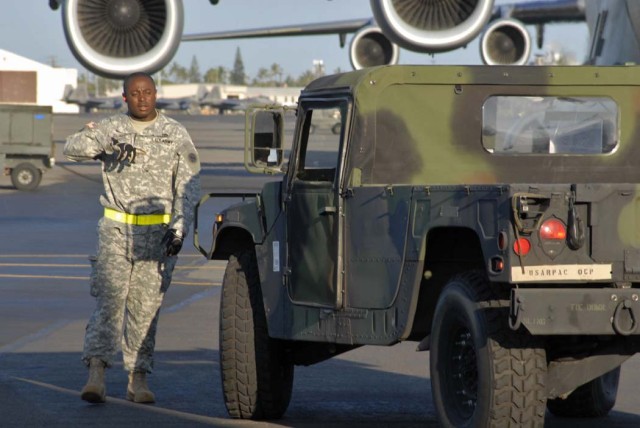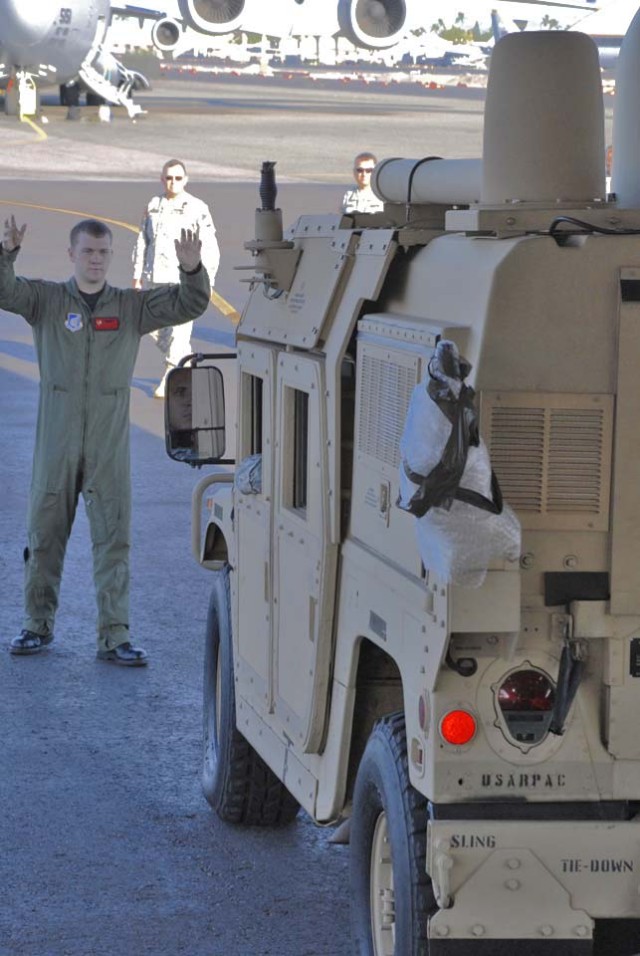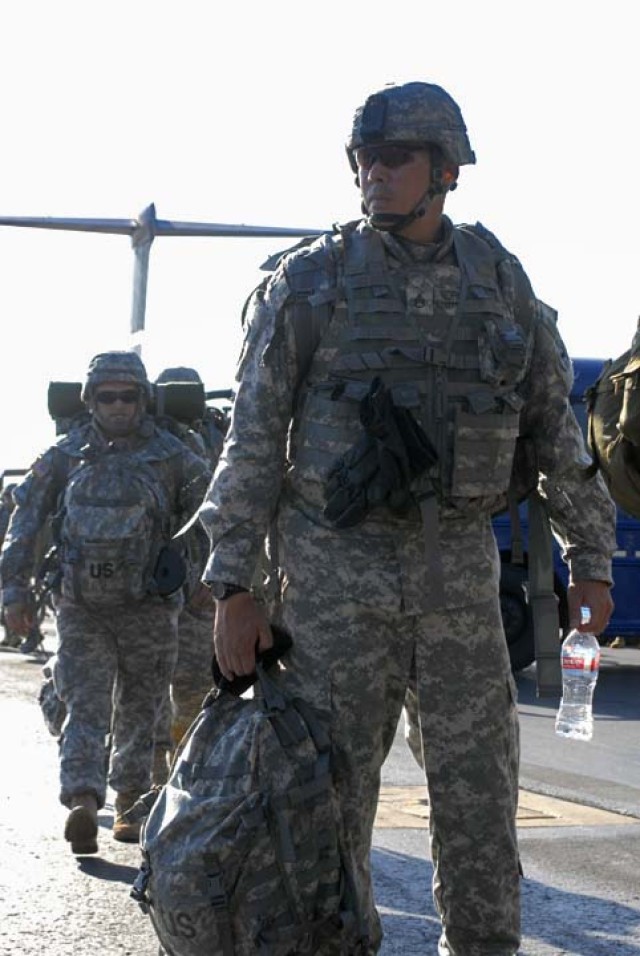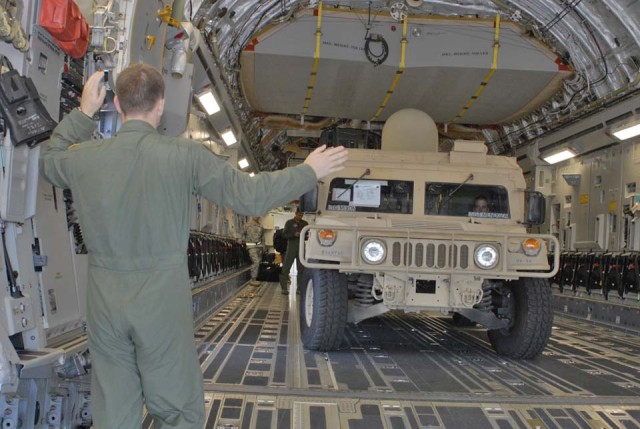HICKAM AIR FORCE BASE, Hawaii - A Category 4 hurricane hits Hawaii, injuring hundreds and severely damaging the infrastructure, prompting the governor to ask the federal government for help. The military is asked to provide vital assistance.
Joint Task Force-Homeland Defense stands up and immediately sends out the Deployable Assessment Team, capable of going anywhere in 24-72 hours to provide an "eye on the ground" for commanders in the Pacific.
This is the exact scenario that played out when more than 20 members of the DAT deployed to Kauai May 30 to provide an on the ground view of the damage as part of Exercise Makani Pahili 09.
"We're going into here in a homeland defense scenario where the area has been devastated by a hurricane and most of the infrastructure has been knocked out," said Col. Sean Callahan, director of operations for USARPAC's Contingency Command Post. "So we go in and provide an assessment and provide a very small and command and control capability to the senior commander as required."
"We will provide a forward and rapidly deployable element that can provide the assessments from people who are actually on the ground who can see what the terrain looks like and send that information back to JTF-HD," added Capt. Jeremy Pflug, lead action officer for the DAT. "I think in the end, having us on the ground will help us save lives."
The DAT is one part of USARPAC's newest element, the Contingency Command Post. The CCP has taken the place of the Operational Command Post as USARPAC becomes leaner and capable of going anywhere in the theater with a trained and ready force.
"The CCP is capable of conducting small scale contingency operations," said Lt. Gen. Benjamin R. Mixon, commanding general, USARPAC. "The command post will be deployable and be prepared to go out, and if augmented, can also handle other contingency operations such as a small joint task force involved in peace enforcement."
According to Callahan, this marks the first deployment for the DAT. This is a new capability that can provide an assessment of a disaster relief/humanitarian assistance type scenario in any austere environment, especially important for USARPAC's role as the lead element for JTF-HD.
"Specifically, the DAT here is tied into Makani Pahili and exercises our emergency management procedures and specifically for USARPAC," he said. "So we provide them an on the ground assessment and operational analysis for their planning and resource requirements and requests for forces, etc.
Callahan said the core of the DAT is the operations center, but equally important are the specialists who come that actually do the assessments and provide that technical feedback for an operational analysis and assessment.
"We've got medical expertise, we've got law enforcement expertise, engineers to assess infrastructure, and number of sustainment specialties who can look at petrol and food stocks, etc," he said. "So we've got a small but pretty comprehensive package that can go in and look at an area and provide an overall assessment of the state of affairs."
Besides the Soldiers, equipment plays an important role in the deployment. The team brought vehicles, communication nodes and automation equipment to do their job. The hardest part for Callahan and his team was trying to figure out who and what to bring.
"This is critical training for us," he said. "We've had to figure out our load plans, configure the loads correctly and task organize ourselves for a field deployment. It's something we normally don't do in a high staff like this so we had to shake out some of the cobwebs and come together and put together our team and figure out our procedures and processes and this is really critical for that."
A United States Air Force C-17 Globemaster transported the team and their equipment to Kauai while members of USARPAC's logistic directorate helped the team load the equipment on the airplane, making this trip a joint venture.
"It was difficult to get the DAT started," said Pflug. "But once everyone saw how important this was, they jumped right in to help."
The team will be deployed to the Pacific Missile Range Facility for the next seven days as part of the exercise.








Social Sharing